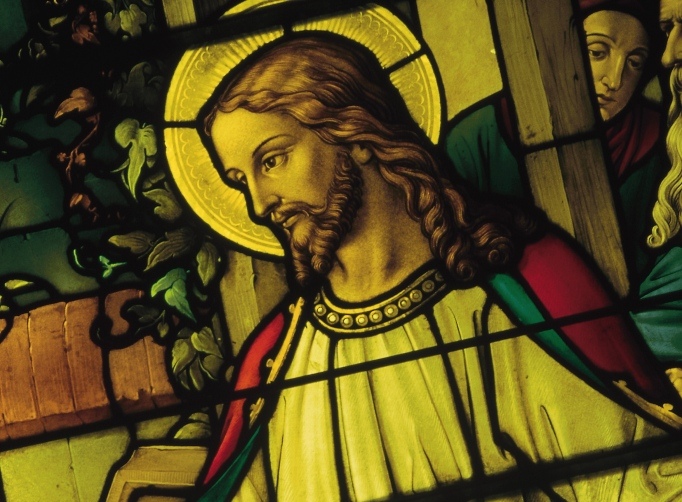The views expressed in our content reflect individual perspectives and do not represent the authoritative views of the Baha'i Faith.
Can anyone imagine a more incredible or awe-inspiring event than seeing a loved one brought back to life?
Consider, for instance, how astonished the people of Christ’s day must have been to witness some of their loved ones return to life at the very moment of Christ’s crucifixion: “. . . he [Jesus] . . . yielded up the ghost. . . . [and] the graves were opened; and many bodies of the saints which slept arose . . .” – Mathew 27:50-53.
The excitement and interest generated by this amazing event would have had a profound impact, not only on the Jews but on their contemporaries. Yet strangely, no source outside the Bible records this astounding phenomenon, even though the saints who resurrected would have had a lot to say about the death experience, with innumerable people eager to listen to and record their accounts. At the very least, family members would have passed down oral histories to future generations, yet no such accounts exist. Since they do not, perhaps we should consider the possibility that instead of detailing a physical resurrection, Scripture describes in figurative language a spiritual resurrection–one in which the hearts of some saintly Jews were moved by Christ’s message and crucifixion to rise out of graves of “spiritual death” (disbelief) to be “spiritually reborn” or “resurrected” as believers in him.
Moreover, if we understand this resurrection as symbolic in nature, what does that mean about the nature of Christ’s own resurrection?
Christ prophesied, “For as Jonas was three days and three nights in the whale’s belly; so shall the Son of man be three days and three nights in the heart of the earth.” – Matthew 12:40.
Strangely, Christ’s physical body did not spend “three nights in the heart of the earth”, for the Bible says Christ was crucified Friday and resurrected Sunday. Was Christ suggesting then that his “figurative body” would be resurrected? If so, what could that body be?
The apostle Paul equates “the body of Christ” with Christ’s believers:
So, we being many, are one body in Christ… – Romans 12:5.
Now ye are the body of Christ, and members in particular… – 1 Cor 12:27.
 If the resurrected body of Christ is actually the resurrected believers, then the prophecy regarding Christ’s resurrection after three days makes sense, for it appears the disciples lost their faith Thursday night in the Garden of Gethsemane and regained it Sunday – exactly three days and three nights later. In other words, the believers (the body of Christ) were in the heart of the earth (spiritually dead) for that three day period as exemplified by Judas’s betrayal of Christ, Peter’s denial of Him, and the disciples fleeing in fear at the moment of Christ’s arrest and crucifixion. George Townshend, archdeacon of the Anglican Church, explains the extent of the disciples’ dismay:
If the resurrected body of Christ is actually the resurrected believers, then the prophecy regarding Christ’s resurrection after three days makes sense, for it appears the disciples lost their faith Thursday night in the Garden of Gethsemane and regained it Sunday – exactly three days and three nights later. In other words, the believers (the body of Christ) were in the heart of the earth (spiritually dead) for that three day period as exemplified by Judas’s betrayal of Christ, Peter’s denial of Him, and the disciples fleeing in fear at the moment of Christ’s arrest and crucifixion. George Townshend, archdeacon of the Anglican Church, explains the extent of the disciples’ dismay:
The crucifixion cast them into utter… despair…. For three days the cause and reality of Christ (His Teachings, bounties, perfections, and spiritual power) lay in their hearts dead and buried. When after three days the disciples became assured and steadfast, and began to serve the cause of Christ, and resolved to spread the divine teachings… the Reality of Christ became resplendent and found life. – The Heart of the Gospel, pp. 140-141.
The account of Christ’s resurrection, therefore, does not literally depict what took place, but rather shows that the body of Christ, the believers, briefly lost their faith and then regained it–becoming so faithful and committed that they spread Christ’s message throughout the world. The Baha’i teachings make this important symbolic point clearly:
The Cause of Christ was like a lifeless body; and when after three days the disciples became assured and steadfast, and began to serve the Cause of Christ, and resolved to spread the divine teachings, putting His counsels into practice, and arising to serve Him, the Reality of Christ became resplendent and His bounty appeared; His religion found life; His teachings and His admonitions became evident and visible. – Abdu’l-Baha, Some Answered Questions, p. 104.
Some might argue that this understanding undermines the bedrock of Christian faith, which depends on the reality that Christ physically resurrected. In response, consider how Christ, in one of his most thought-provoking narratives, says that physical resurrection does not serve as a foundation for faith.
Christ’s story describes the fate of both a rich man and a beggar after they die. The beggar, Lazarus, attains comfort from Abraham in heaven, while the rich man laments his condition in hell, begging Abraham to send a resurrected Lazarus to his brothers so they would not end up in hell like himself. Abraham responds, “They have Moses and the prophets; let them [the brothers] hear them.” The rich man retorts, “Nay, father Abraham: but if one went unto them from the dead, they will repent.” Abraham replies, “… if they hear not Moses and the prophets [God’s Word], neither will they be persuaded though one rose from the dead.” – Luke 16:19-31.
In brief, the rich man desires that his brothers attain faith and avoid the torment of hell. He believes a visit to them by the resurrected Lazarus would secure their faith. Christ, however, explains that if the rich man’s brothers are not persuaded through God’s Word, a resurrection of the dead would have no power to produce such influence. In essence, Christ emphasizes that “faith” should lie securely and only on God’s Word, and discounts the power of miraculous physical resurrections.
In essence, then, the reality of Christ’s resurrection is spiritual, and scripture conveys it using figurative language. Clearly the disciples lost their faith in Christ for three days, but it was then rekindled and turned into a blaze of fire that could never be put out. Christ’s followers then spread his redemptive message, his transformative Word, throughout the world, blessing all who embraced it.
You May Also Like
Comments

















But there were also false prophets among the people, just as there will be false teachers among you. They will secretly introduce destructive heresies, even denying the sovereign Lord who bought them... Many will follow their depraved conduct and will bring the way of truth into disrepute. In their greed these teachers will exploit you with fabricated stories... 2 Pet 2 NIV
Matthew 24:5 For many shall come in my name, saying, I am Christ; and shall deceive many.
11And many false prophets shall rise, and shall deceive many...
13But he that shall ...endure unto the end, the same shall be saved...
24For there shall arise false Christs, and false prophets, and shall show great signs and wonders; so that, if it were possible, they shall deceive the very elect.
What though explains Yeshua’s instruction to ...Thomas to touch His wounds in His hands, feet, and side as proof that Christ’s body still lived. Is it possible that Christ’s spirit was speaking to Thomas’s soul, offering him proof that His body, (His believers - symbolized by Christ’s wounds) still lived and that these “members” of His body were willing to die (be wounded) for Christ? Clearly, Thomas was unwilling to believe that the Cause of Christ was still alive until he touched these wounds (recognized that these wounds truly existed - believers willing to die for Christ). With the spark of faith rekindled in Thomas, Yeshua made this observation.
Jesus saith unto him, Thomas, because thou hast seen me, thou hast believed: blessed are they that have not seen, and yet have believed. (John 20-24-29)
In other words, blessed are those whose faith is not conditioned upon the faith or sacrifice of others; unlike, Thomas who refused to believe Christ lived until he saw others willing to sacrifice themselves for Christ. Thomas doubted but was quickened by the faith of his fellow believers.
Of course, Lourdes you are also correct that Yeshua could go through closed doors, and the hardest door to go through is not physical but spiritual, for a closed door to faith is indeed a hard one to crack. Fortunately for Thomas, Christ opened the door of his heart through His resurrected and wounded body, His believers.